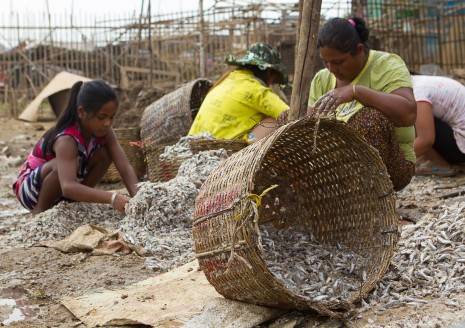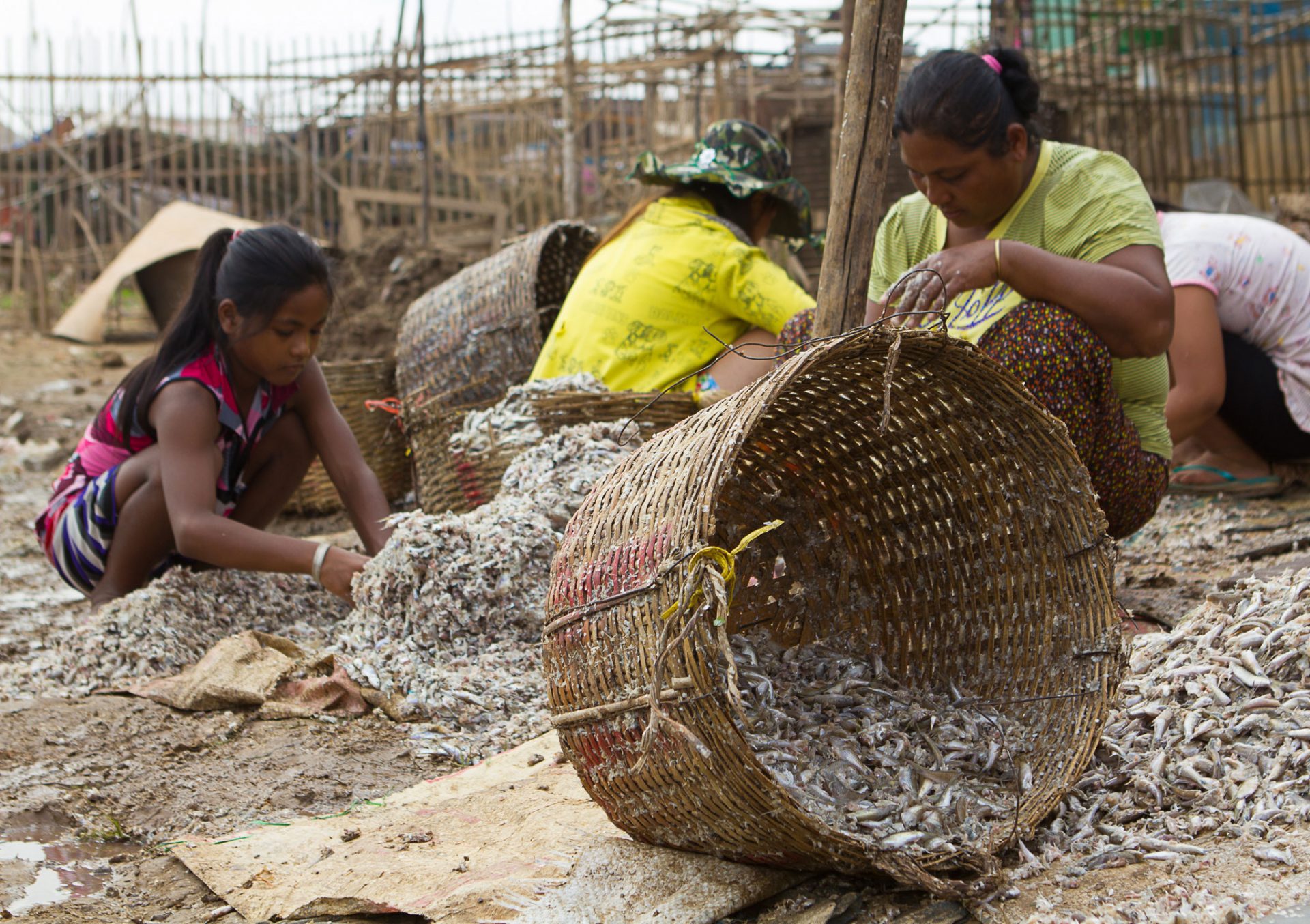Last week marked the end of the annual fishing season and many who had gathered on the riverbanks to buy and sell fish in the Russei Keo district of Phnom Penh called it the best season in years.
An abundance of fish, there were bargain prices to be had for trey riel, the fish used to make the much-loved pungent fermented paste—prahok.

Teng Kunthea, 35, and his wife had traveled from Kandal Stung district, Kandal province, to purchase their stock of fish to make prahok.
“I traveled very far to buy the fish because I think the prices are lower [compared to last year],” Mr. Kunthea said, speculating that high water levels in the country’s rivers last year, which led to widespread flooding, as well as the closure of other fishing areas further up the river, were responsible for the bumper catch and low prices.
Another satisfied customer, Man Sokha, 50, sat cross-legged in a bright flowered top and sarong, under the shade of a tarp, surrounded by her five grown daughters, some with babies on hip, as they prepared their lunch: rice, and a large fish she had just bought.
Traveling to Russei Keo for the past 10 years to buy her stock of trey riel, officially known as Siamese mud carp, to turn into prahok paste, Ms. Sokha said the prices this year had dropped significantly, from 1,800 riel per kg last year to 1,250 riel this year.
“I came here with most of my village,” Ms. Sokha said, adding that she will be making her stock of prahok for her family, not to sell.
“Because there was a big flood last year, the prahok fish has increased and will continue to be abundant for a long time,” said Tling Vanthol, administrative chief of the Kandal provincial fishery department.
With many poor rural families depending on the protein-rich prahok paste to sustain them through lean times of the year, when there is little money to buy meat, the low cost of trey riel will help the livelihoods of many this year.
The piles of fish on the riverbank last week were freshly cleaned and gutted, before bags of salt were poured over them. After fermenting for two days by the river, the fish will be mashed into fish paste, mixed with some more salt and then stored to ferment for at least another three weeks. Prahok can be kept long after the fishing season is over, making it a staple of Cambodian cuisine.
Mut Sitha, 67, the owner of the one of the many fishing dai, or large docks, up and down the river, said prahok fish were selling for 1,200 to 1,400 riel per kg [about $0.30 to $0.35], while prices were higher for larger fish.
“The biggest [fish] will sell for 20,000 riel [about $5] per kilogram, the medium sized fish will sell for between 9,000 to 10,000 riel per kilo [about $2.25 to $2.50],” Mr. Muth said, while overlooking the flurry of activity surrounding the fresh catch.
Because of the large amount of fish caught during this season, prices were as low as 500 riel, about $0.12, per kg in some areas, said Seng Pun Chhoeurn, administrative chief of Kompong Chhnang’s provincial fishery department.
Although official numbers for the total amount of fish caught during the first two weeks of 2014 have not yet been tallied, many officials believe that the numbers are even higher than December, which was already an increase on the same period in 2012.
“Nearing the end of 2013, from October to December, we were able to catch 3,650 tons of fish, and compared to the same period in 2012, it has increased by 26 percent [995 tons],” Mr. Pun Chhoeurn said.




